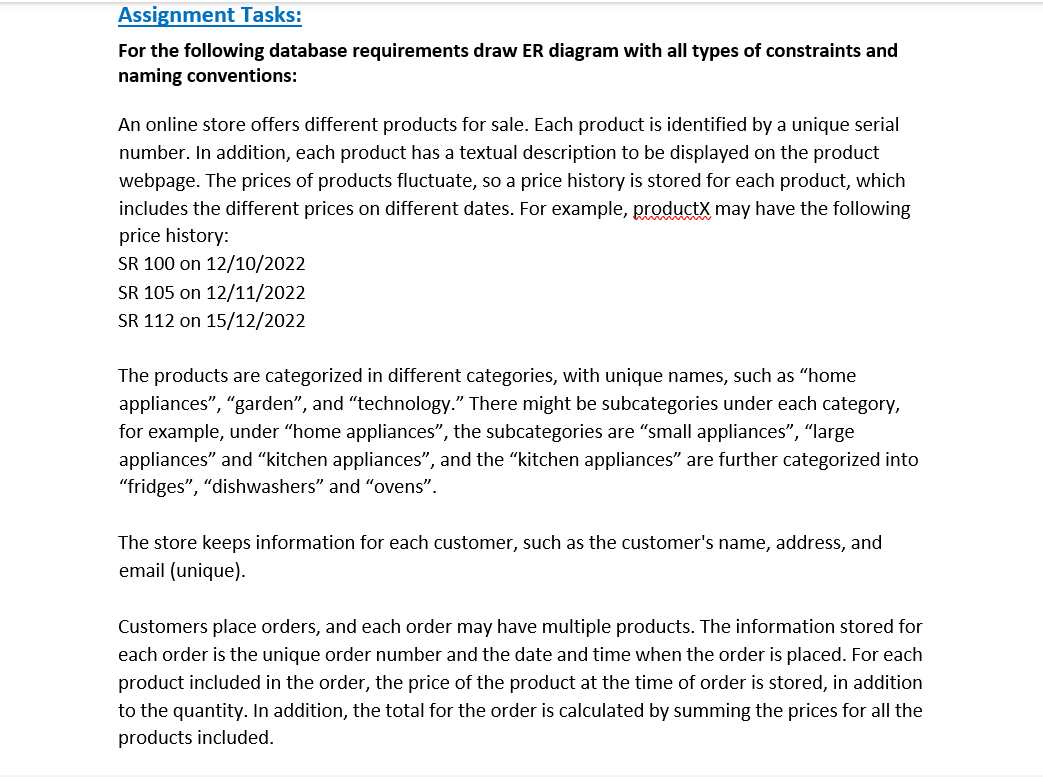Home /
Expert Answers /
Computer Science /
please-draw-the-er-diagram-for-the-following-database-requirements-draw-er-diagram-with-all-pa391
(Solved): **please draw the ER diagram ** For the following database requirements draw ER diagram with all ...
**please draw the ER diagram **
For the following database requirements draw ER diagram with all types of constraints and naming conventions: An online store offers different products for sale. Each product is identified by a unique serial number. In addition, each product has a textual description to be displayed on the product webpage. The prices of products fluctuate, so a price history is stored for each product, which includes the different prices on different dates. For example, productX may have the following price history: SR 100 on \( 12 / 10 / 2022 \) SR 105 on \( 12 / 11 / 2022 \) SR 112 on \( 15 / 12 / 2022 \) The products are categorized in different categories, with unique names, such as "home appliances", "garden", and "technology." There might be subcategories under each category, for example, under "home appliances", the subcategories are "small appliances", "large appliances" and "kitchen appliances", and the "kitchen appliances" are further categorized into "fridges", "dishwashers" and "ovens". The store keeps information for each customer, such as the customer's name, address, and email (unique). Customers place orders, and each order may have multiple products. The information stored for each order is the unique order number and the date and time when the order is placed. For each product included in the order, the price of the product at the time of order is stored, in addition to the quantity. In addition, the total for the order is calculated by summing the prices for all the products included.
Expert Answer
Here is an ER diagram that captures the requirements: [ER diagram] Explanation: The diagram includes four entities: Product, Category, Customer, and O
